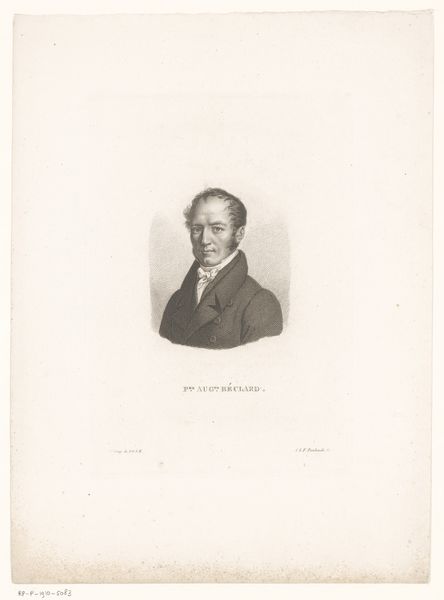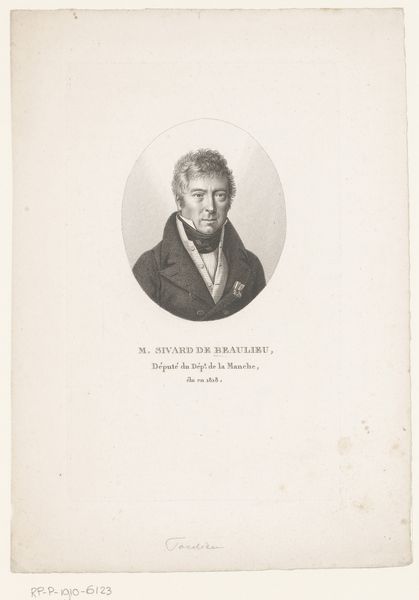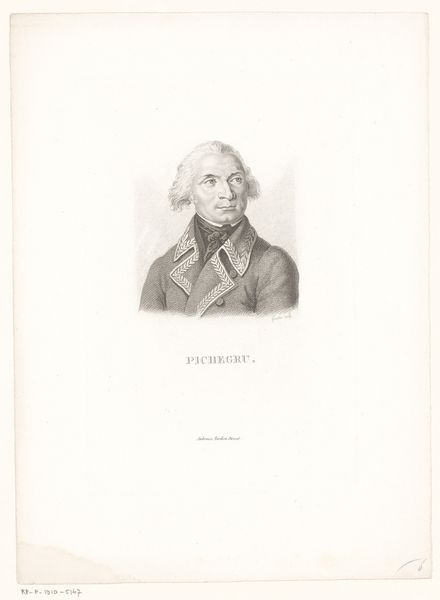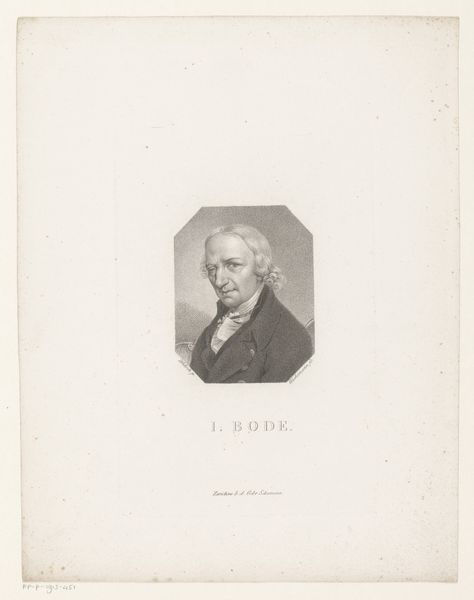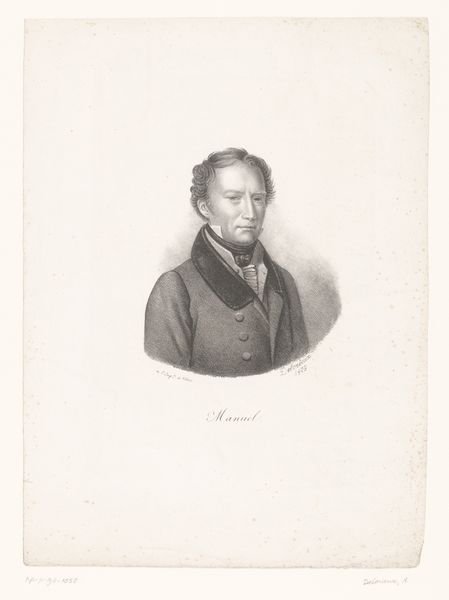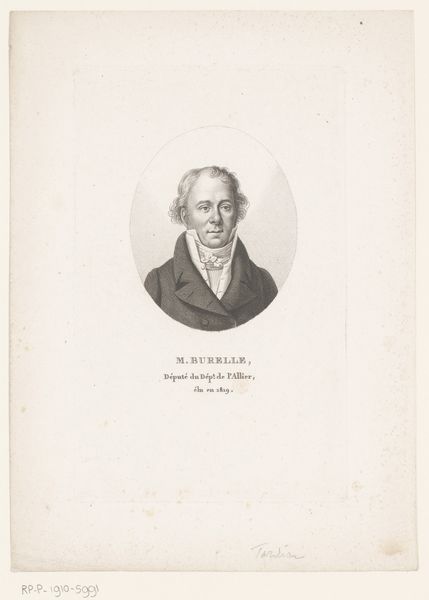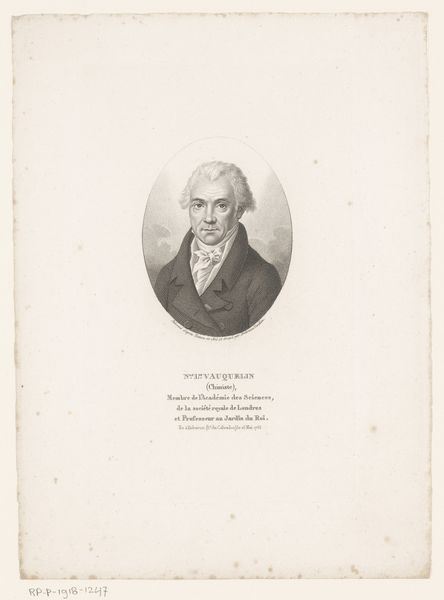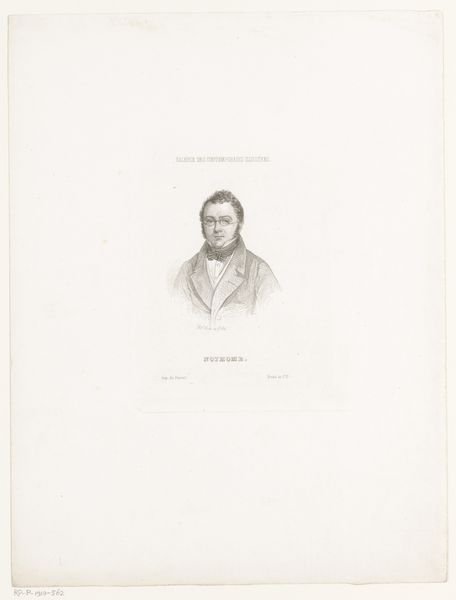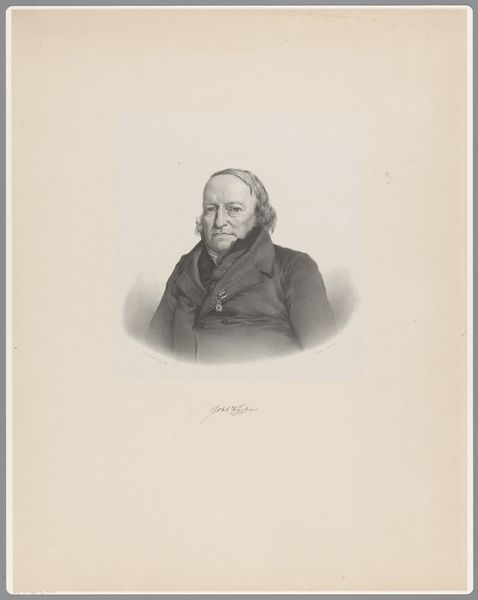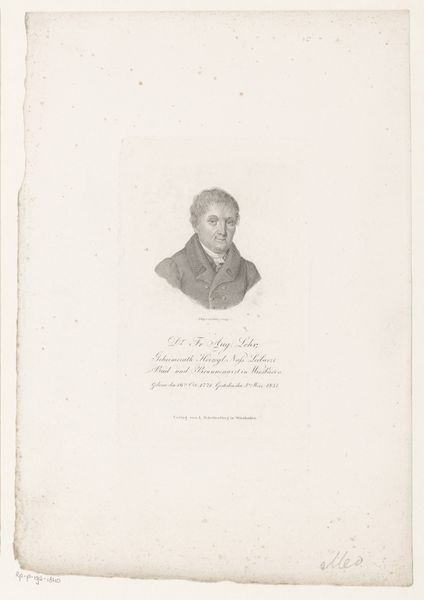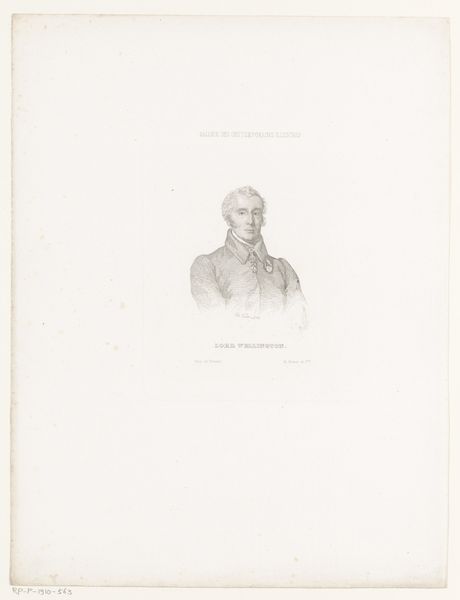
drawing, pencil
#
portrait
#
pencil drawn
#
drawing
#
neoclacissism
#
light pencil work
#
pencil sketch
#
pencil
#
pencil work
Dimensions: height 208 mm, width 131 mm
Copyright: Rijks Museum: Open Domain
Curator: This pencil drawing, made around 1818, is titled "Portret van Jean Nicolas Houchard" by Charles Aimé Forestier. Editor: The light pencil work really gives it a ghostly feel, almost as if he's fading from the page. The figure seems to float against this blank background, making me consider how ephemerality connects to remembrance. Curator: Forestier adopts a neoclassical approach, drawing the sitter’s features with precision and presenting the figure in a timeless style reminiscent of ancient portraiture. Houchard, a General of the French Revolution, becomes a type, embodying republican virtue, although the stark, classical style feels perhaps too static to convey revolutionary fervor. Editor: The artist employs an interesting asymmetry here; Houchard's gaze directs to the right, off the page. Note the artist's rendering of light; a definite contrast is established. It is largely balanced and the values, the relative lightness and darkness, give his jacket the three-dimensional effect, no? Curator: Precisely! That asymmetrical composition gives us an unbalanced image of a powerful personage; what kind of person, or history does he embody, that seems offset by an event or feeling that we the viewers may not quite understand? It makes you wonder about the sitter's reputation, especially given that he was executed. I suppose we see that uncertainty expressed in his figure here. Editor: His clothing has these striking embroidered laurels—or is it wheat? Their sharp, distinct execution in this light work brings such a bold graphic presence. It contrasts well to his softened and aged expression and adds a bit of formalist appeal to an otherwise drab work, don't you agree? Curator: Not quite drab, I'd say contemplative! It highlights the dichotomy between his public heroism symbolized by the laurels or wheat, and his internal reflections on what occurred in his lifetime. Looking closely, it's the careful modeling of his face and knowing eyes that tell of inner complexity. He's more than just a symbol; there's a person there. Editor: I'll concede this: despite the limits of the medium and the formal composition, it is true that a quiet emotion emanates from Houchard. There's a melancholic mood captured well here. Curator: Right—in exploring Houchard’s story, Forestier's seemingly simple sketch encourages us to contemplate memory, judgment, and the intricate connections between symbol and individual.
Comments
No comments
Be the first to comment and join the conversation on the ultimate creative platform.

